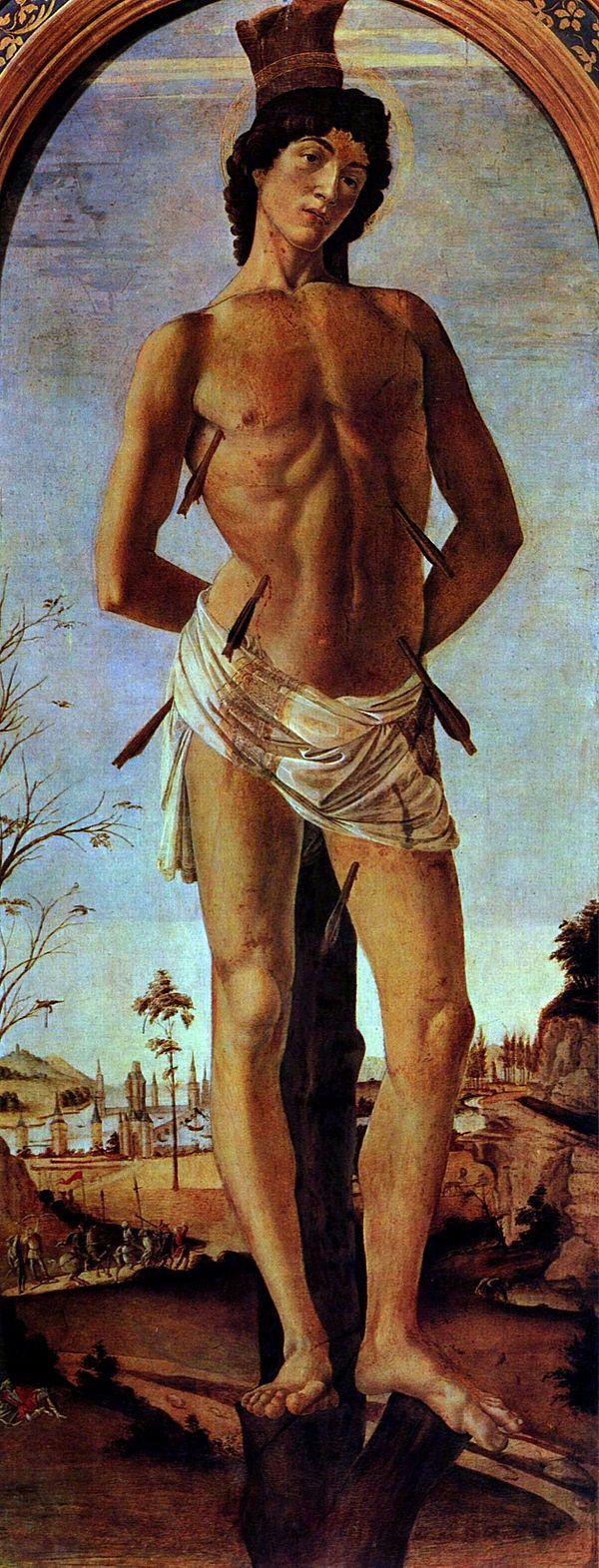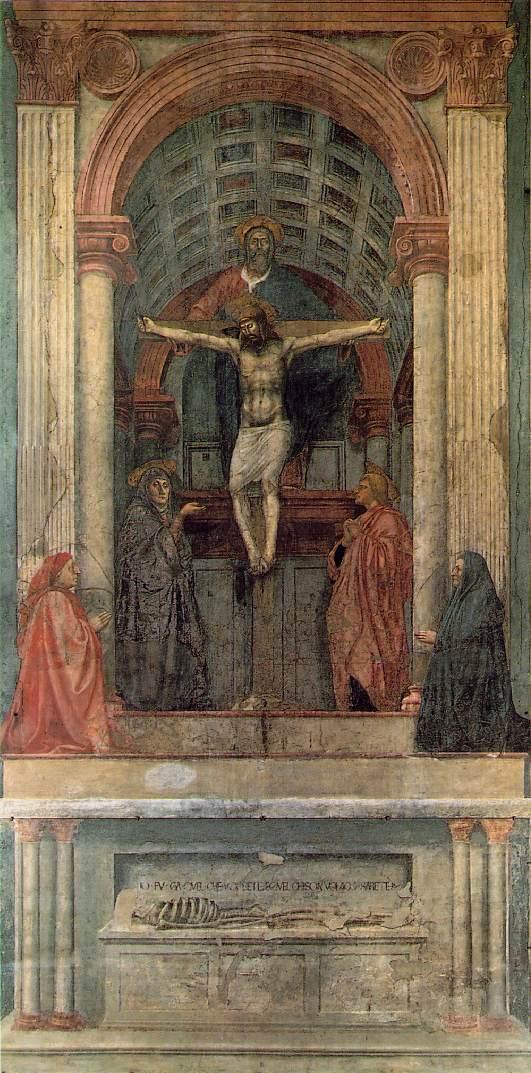Artistic Response to The Black Death
Since the antiquity of mankind's existence, history has shown that whenever catastrophe strikes a population, society's reaction of the time has always been to seek an answer as to why it occurred in the first place. Typically in societies that have no scientific bases in their explanation presume the catastrophe was brought on by divine intervention. When the Black Death hit Europe in 1347 the death toll reached a staggering rate that present-day historians believe wiped out half of Europe's population, with populated cities such as Florence, Milan, and Venice reaching even higher death rates than one half. During a time where disease was found everywhere, and the only certainty in life was death, many people found themselves turning away from their religion, while others found salvation in it. Today historians can study the witnesses of the Black Death experiences, and beliefs through the art they created. The artistic response to the Black Death is one of the most credible sources of study in understanding people's experiences during the time. This essay will address the artistic response to the Black Death.
Most commonly familiarized with art during the Black Death is Saint Sebastian. Saint Sebastian was a Christian from Verona who joined the Roman army 283 with the intention of assisting martyrs, however, when he was discovered as a Christian in 286, he was sentenced to execution by arrows. Sebastian survived the execution, and his story of escaping death through his faith encouraged witnesses the Black Death to pursue the practice of Christianity. A powerful painting of Saint Sebastian completed in 1480, by Ambito di Ercole de Roberti serves as an example of how artist chose different styles in displaying their Sebastian. Roberti decided to use Mannerism in his painting by having his Saint Sebastian look directly at the audience. His gaze appears to his audience knowingly, possibly indicating a connection with the viewer at the time. The use of Mannerism when painting Saint Sebastian is a rare sight as many artists chose to not to use this style of painting. It is also important to note that although the date of the painting is recorded after the emergence of the Black Death, death and disease still plagued Europe for a century after the bubonic plague hit. This is why artwork depicting Saint Sebastian was commonly produced well into the Renaissance Era.



The people of Europe believed in Saint Sebastian so much that they not only portrayed him as a survivor but also as a savior for mankind from even God Himself. In St. Sebastian Intercedes for the Plague Stricken by Josse Lieferinxe, shows saint Sebastian begging God to spare the peoples lives of Pavia. In this artwork, Saint Sebastian is depicted humbling kneeling in front of God with his hands pressed together in prayer, with the signature arrows pierced in his body.
One of the most recognizable Saint Sebastian paintings was created in 1447 by Sandro Botticelli himself. In Botticelli’s Saint Sebastian, Sebastian appears to be elongated with seven arrows pierced in his body. Despite the arrows, Sebastian's posture, and facial features remain relaxed and at ease unlike Roberti who’s Sebastian is bent backward in pain. No doubt the artistic response between Roberti and Botticelli were evidently different.
Historiography in the past once interpreted artwork like Botticelli’s where Saint Sebastian is not in pain to be a representation of people’s mindset about death. It was believed that death during that time occurred so often that it no longer welded fear in people, and society became numb to it. This concept was universally accepted because of the large body of evidence found in the form of primary sources from people expressing an almost senseless mood toward humanity. However, more recently another interpretation has sprung up to challenge the past historiography, this one that has more to do with death associated as a beginning rather than an ending.
Past historiography interpreted death in a dark tone that symbolized an ultimate ending. This new interpretation believed that Saint Sebastian absent of fear in many art pieces did not come from negative physiological effect brought by the Black Death, but rather was shown absent of his pain because he was at peace from what was to come, a new beginning associated with life after death. This new way of interpreting the Black Death can be supported with the emergence Transi Tombs.
Transi Tombs, also known as Cadaver Tombs, was another form of art that came directly out of the Black Death. Originally Transi Tombs were built with the intention of symbolizing life after death with a two-layered coffin, the top coffin representing who the person was in their lifetime, while the bottom coffin showed how their decaying corpus would look like. For the people who witnessed the Black Death, death was so well integrated into their lives that is bleed into their culture. Traditionally Transi Tombs symbolized that death was to come for everyone, however people took hope and celebrated death believing it was not an ending, but symbolized their spirits were moving on. This new way of thinking during the Black Death fueled artwork, monuments, and tomb making all the way into the latter part of the Renaissance Era.
While in Florence I myself was fortunate enough to find a Transi Tomb monument in the Santa Maria Novella painted by Masaccio in 1427 titled Holy Trinity. The painting shows Christ on the cross his feet being the vanishing point, and a skeleton buried underneath the ground with an inscription saying, “I once was what now you are and what I am, you shall yet be”. The skeleton is a representation of Adam, and the inscription aimed to the audience is a message that Adam, who brought eternal damnation to mankind, serves as a reminder that people's time on earth is temporary, and the only way to overcome eternal damnation is to turn to Christianity.

Another example of Transi Tombs is the tomb of Archbishop Henry Chichele, who was one the greatest leading political figure of his time. Archbishop Chichele tomb was designed and created with the traditional Transi Tomb in mind. The top layer of the tomb represented the Archbishop before he died dressed in his ceremonial robe, and the bottom represented his body in what was to come.
Art that derived from the Black Death had a lasting and dramatic impact on people during and after the plague. It is from the artistic response to the Black Death that we can see how people from the past viewed the world, and how those views changed the culture of their society. The mass amount of Saint Sebastian paintings reveal to us that the witnesses of the Black Death desired hope in both combating death and the belief of a life after death. The emergence of Transi Tombs expresses to us a cultural shift that revolved around the society's consciousness of death as a whole.
This blog post has been sponsored by the Benjamin A. Gilman Scholarship.
https://www.iie.org/Programs/Gilman-Scholarship-Program


Comments
Post a Comment